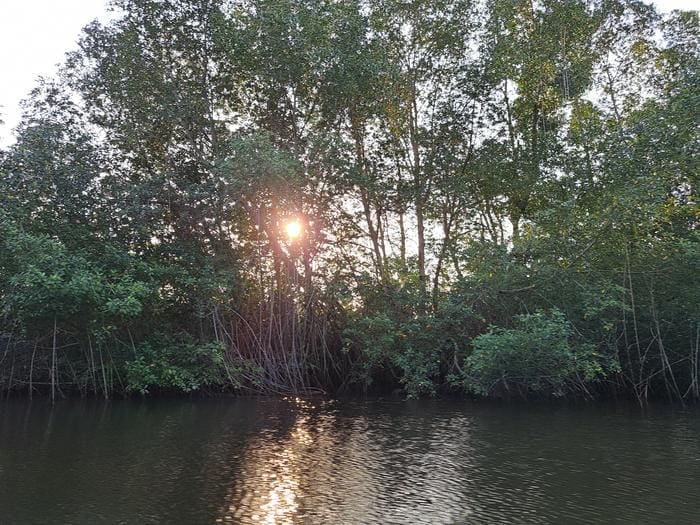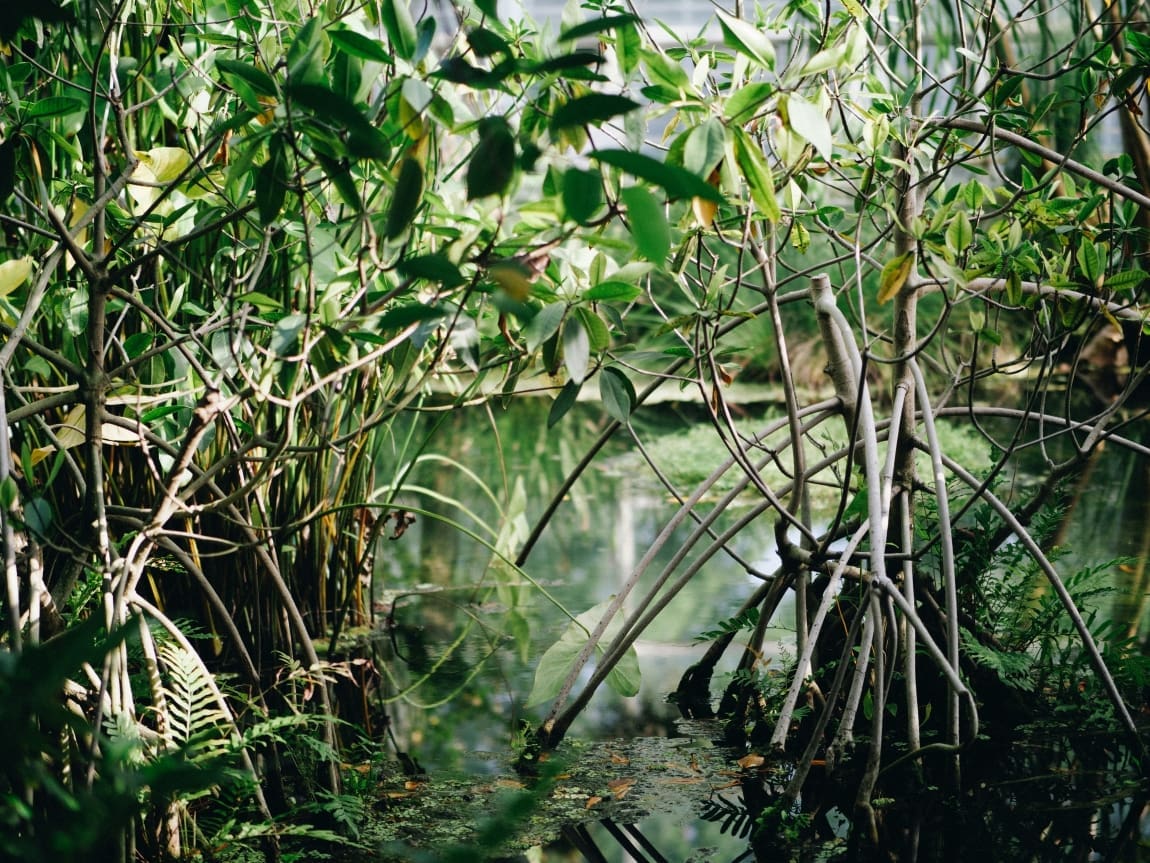By USDA Forest Service – Pacific Southwest Research Station

U.S. Forest Service ecologists and partners published new findings, in Science Advances, on how planted mangroves can store up to 70% of carbon stock to that found in intact stands after only 20 years.
Researchers have long known that mangroves are superstars of carbon absorption and storage. But until now, limited information existed on how long it took for carbon stored in planted mangroves to reach levels found in intact mangroves.
“About ten years ago, Sahadev Sharma, then with the Institute of Pacific Islands Forestry, and I discovered that 20-year-old mangrove plantations in Cambodia had carbon stocks comparable to those of intact forests,” Rich MacKenzie, also with the Institute of Pacific Islands Forestry, stated.
MacKenzie and Sharma assembled a team of mangrove researchers that came together from across the globe to lend their expertise. Led by Carine Bourgeois from the Forest Service’s International Programs office, the team used logistic models compiled from 40 years of data and built from almost 700 planted mangrove stands worldwide to measure carbon stock. They discovered, after 20 years, the trees’ carbon stock reached 71-73% of that found in intact stands.
These research findings could have a positive impact on efforts to restore mangroves worldwide. Along with historical losses, human-driven land use change, extreme weather events, and erosion have wiped out 35 % of the global mangrove area over the past five decades.
“As our dataset grows and more data become available, we hope researchers and stakeholders will gain new insight into planning and techniques for restoring mangroves,” Sharma stated.
Part of that research work also involves monitoring mangroves to see how they’re faring.
“Periodic and regular monitoring of mangroves can provide useful data on survival and success of restoration efforts and can help devise adaptive management strategies as and when needed,” Rupesh Bhomia, from the Center for International Forestry Research and World Agroforestry (CIFOR-ICRAF), stated.

Credit: Carine Bourgeois
Globally, there’s more recognition that conserving and restoring mangroves is vital. These trees are not only powerhouses of carbon storage, but coastal guardians that act as barriers during tsunamis and storm surges. Mangroves also provide habitat for diverse species and nurseries for many aquatic animals.
But MacKenzie warns that mangrove plantations are not always a solution for restoring the trees.
“Properly planned and implemented mangrove plantations are more effective at restoring carbon stocks than are degraded stands. However, this does not mean that mangrove plantations are always the best restoration method,” MacKenzie stated.
Planting mangroves is not a replacement, nor does it compensate for conserving intact stands, the researchers emphasized.
“Our models indicate that replanting in all highly restorable mangrove areas would absorb less than one percent of annual global emissions over 20 years. That’s why conserving existing mangrove stands is paramount,” Bourgeois emphasized.
More information: Carine F. Bourgeois et al., ‘Four decades of data indicate that planted mangroves stored up to 75% of the carbon stocks found in intact mature stands’, Science Advances (vol. 10, Iss. 27; 2024). DOI:10.1126/sciadv.adk5430. FS-USDA Press Release / Material. Featured image credit: Maxwell Ridgeway | Unsplash




